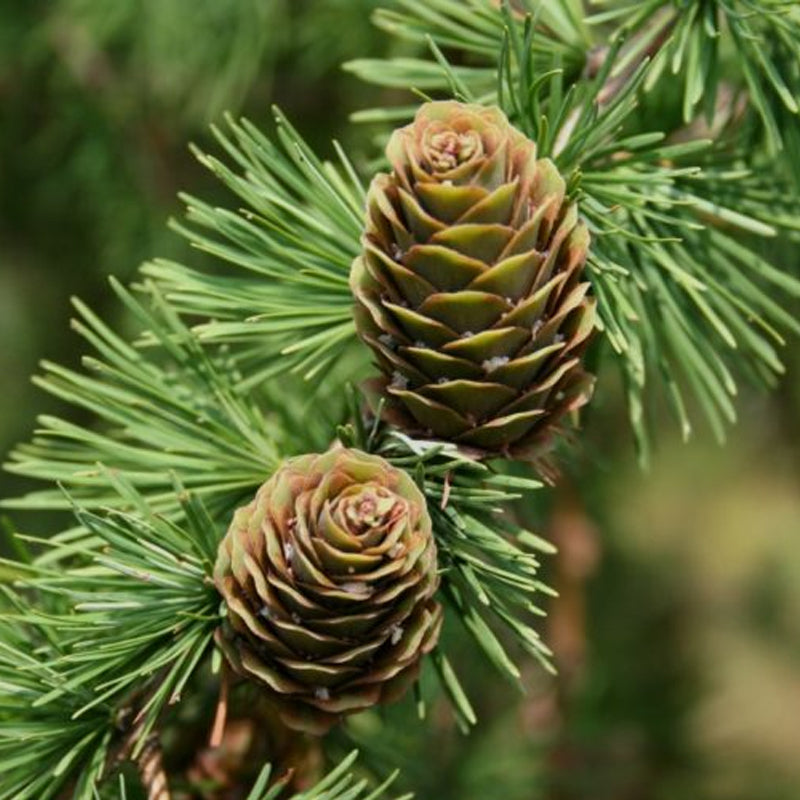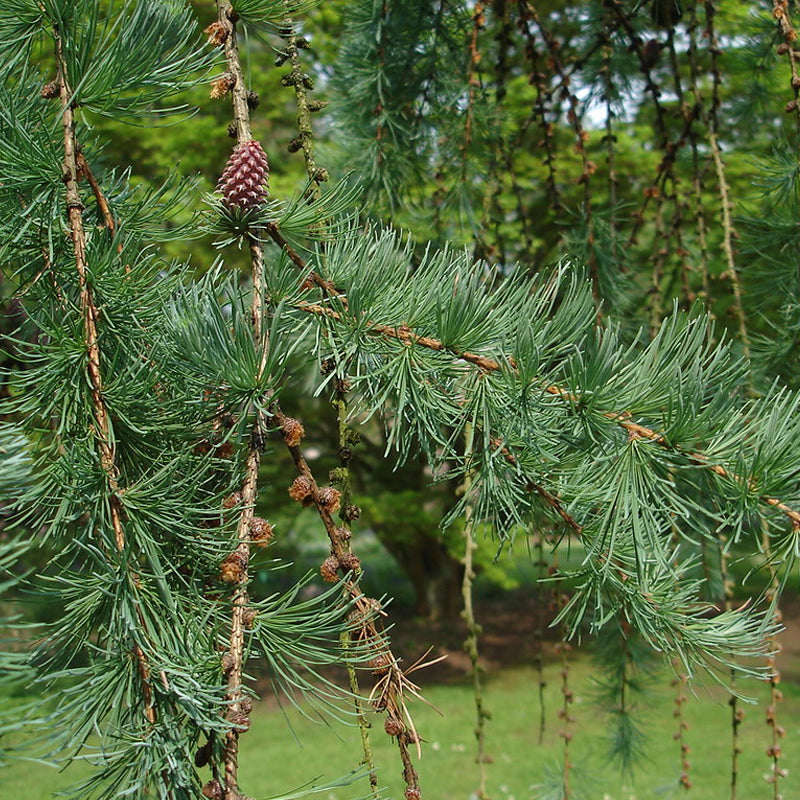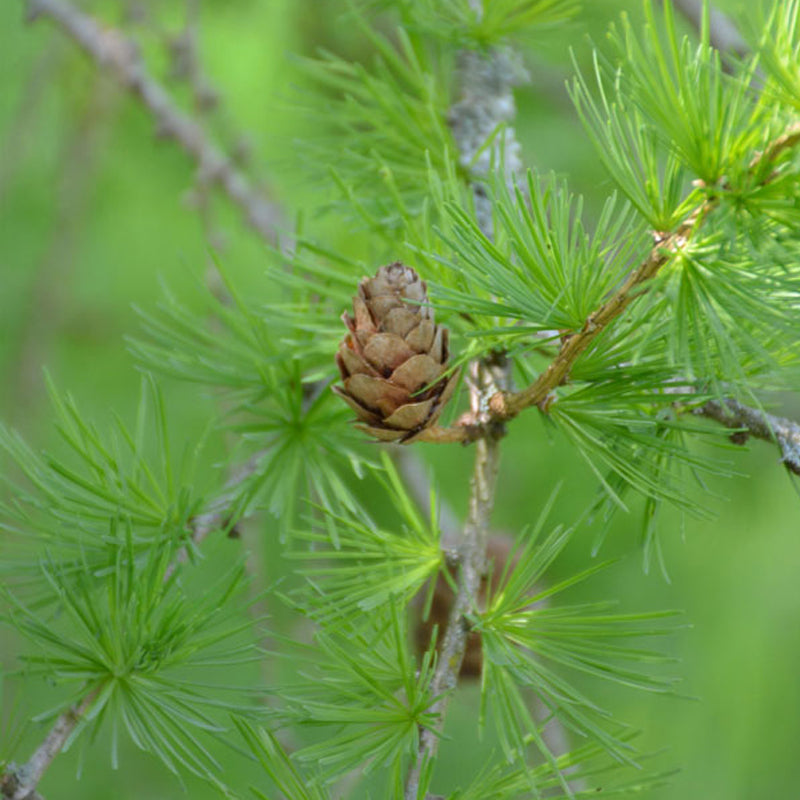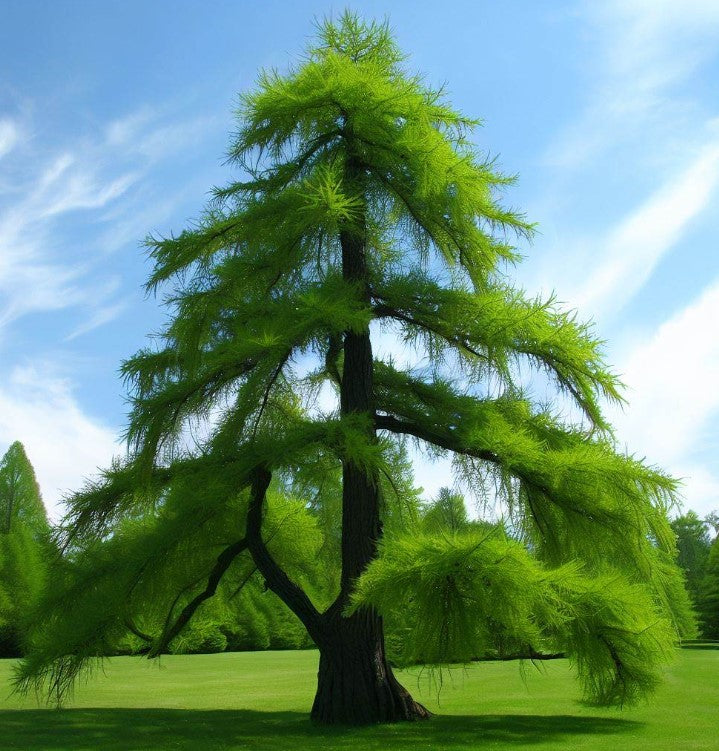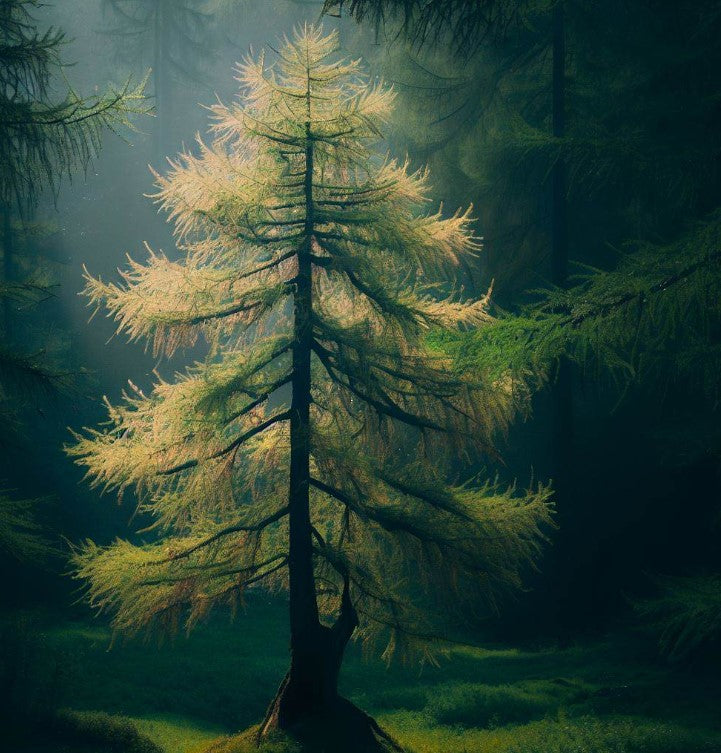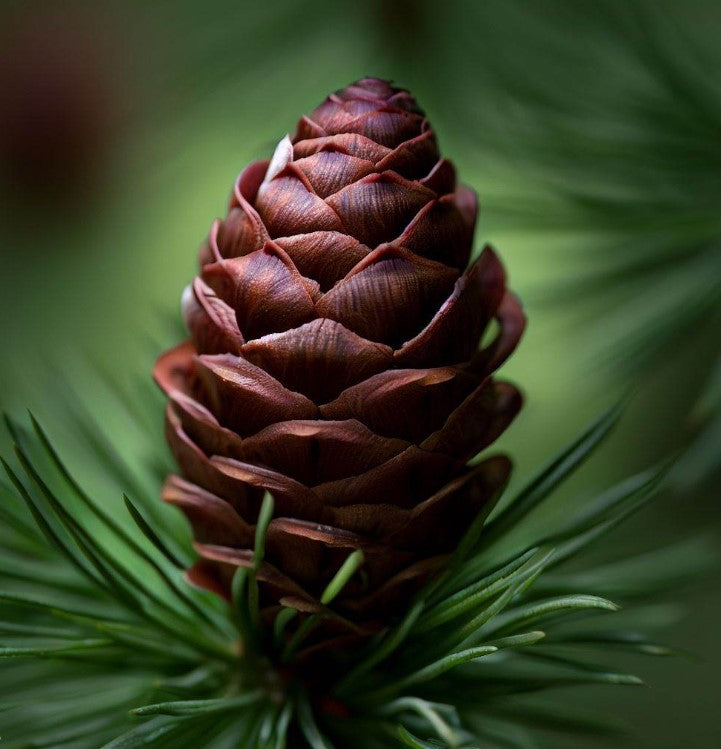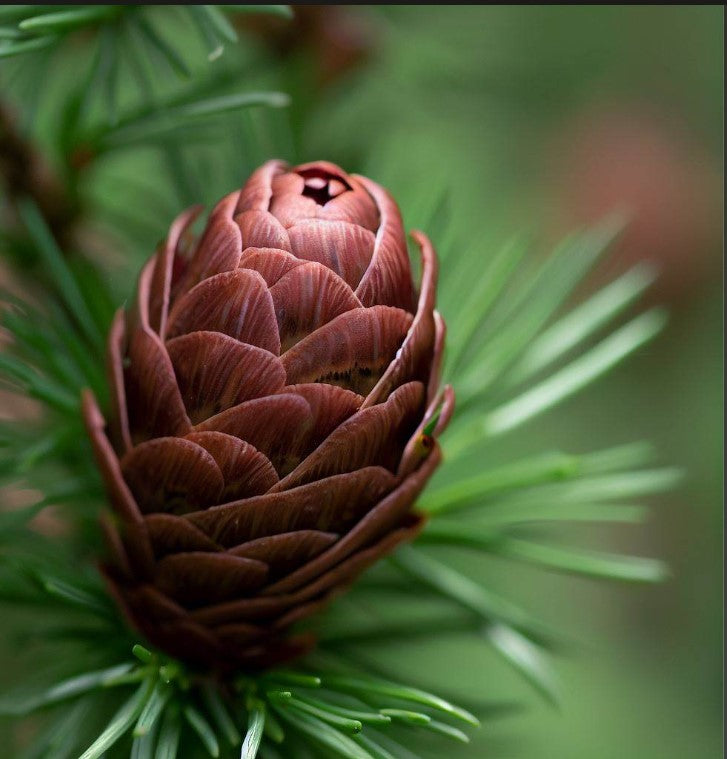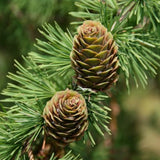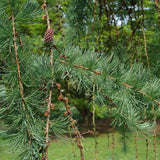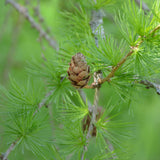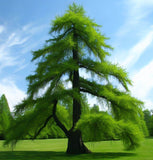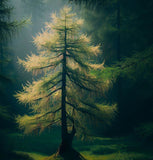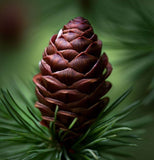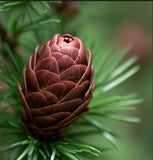Larix x eurolepis (Dunkeld Larch)
Larix x eurolepis (Dunkeld Larch) is a hybrid between two larch species, Larix decidua (European Larch) and Larix kaempferi (Japanese Larch). It is a deciduous coniferous tree that combines desirable traits from both parent species. Here is some information about the Dunkeld Larch:
Appearance: Dunkeld Larch typically exhibits a conical or pyramidal shape when young, maturing into a more rounded or irregular crown as it grows. It can reach heights of 80 to 100 feet (24 to 30 meters) or more. The tree features a straight trunk with rough, grayish-brown bark that becomes deeply furrowed as it ages. The branches are spreading and often slightly drooping.
Needles: The needles of Dunkeld Larch are deciduous, meaning they turn yellow and drop in the fall. They are soft and arranged in clusters or fascicles along the branches, similar to other larch species. Each fascicle usually contains 20 to 40 needles. The needles are slender, measuring about 0.8 to 1.6 inches (2 to 4 centimeters) long. They emerge light green in spring, turn dark green during the summer, and transform into a vibrant golden-yellow color in the fall before they are shed.
Cones: Dunkeld Larch produces small, oval-shaped cones that are about 0.8 to 1.2 inches (2 to 3 centimeters) long. The cones start out purple or green and mature to a reddish-brown color. They contain numerous winged seeds that are dispersed by the wind.
Cultural Significance and Uses: Dunkeld Larch is primarily cultivated as an ornamental tree for its attractive form, vibrant fall color, and the combined traits of its parent species. It is valued for its adaptability to various growing conditions and its ability to withstand cold temperatures. Dunkeld Larch is also sometimes used for timber, although it may not possess the same commercial value as its parent species.
Cold Hardiness: Dunkeld Larch inherits the cold hardiness of its parent species, making it suitable for regions with cold temperate climates. It can tolerate harsh winters and is known for its resilience in cold conditions.
Dunkeld Larch is generally low-maintenance and adaptable to various soil types, including acidic and alkaline soils. It prefers full sun to partial shade and moderate moisture.
Botanical Name : Larix x eurolepis
Common Name : Dunkeld Larch
Height : 100 ft
Spread : 45 ft
Germination Info : 30-45 days cold moist stratification
Hardiness zone : 2-7
Average seed per ounce : Approx. 3500

